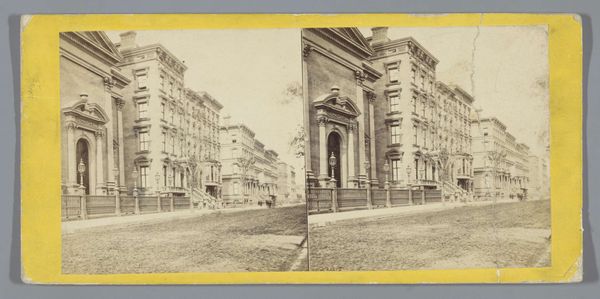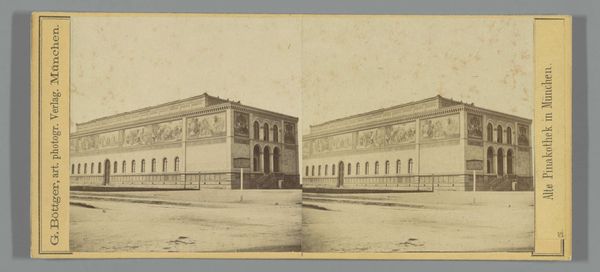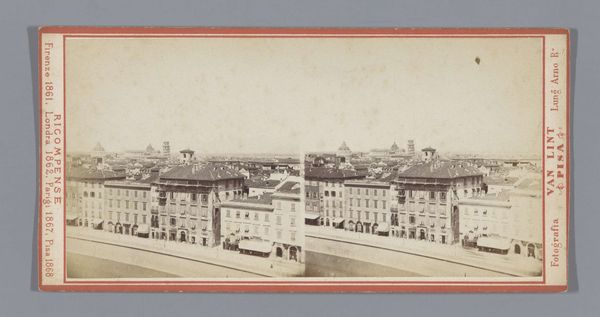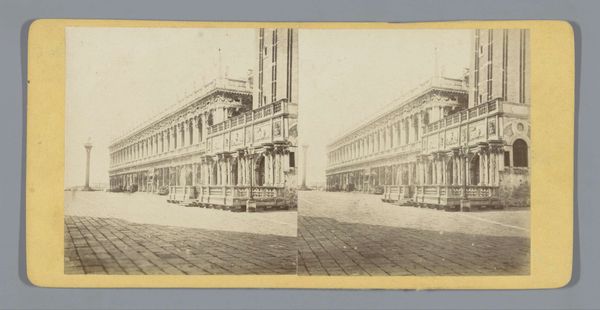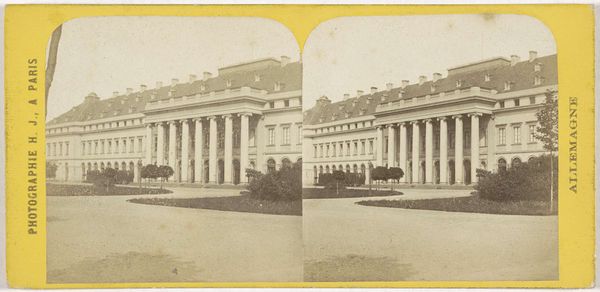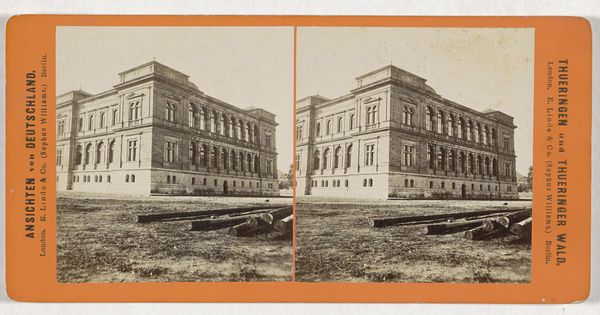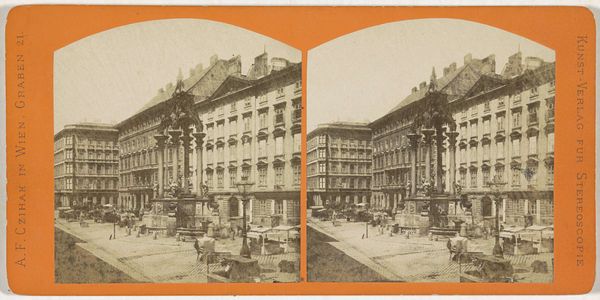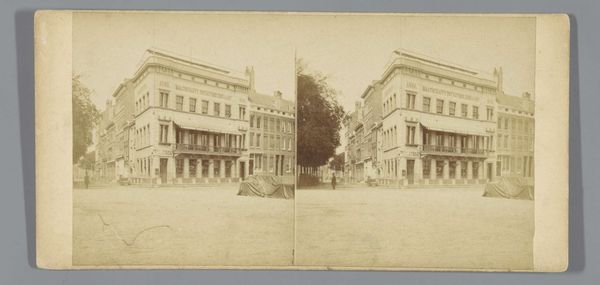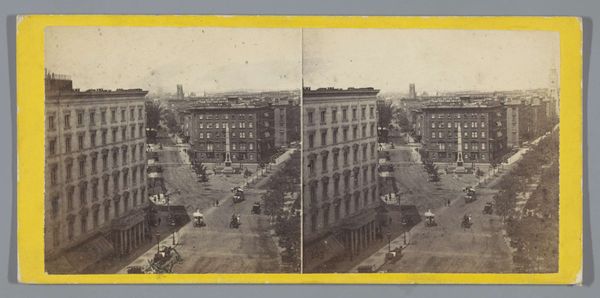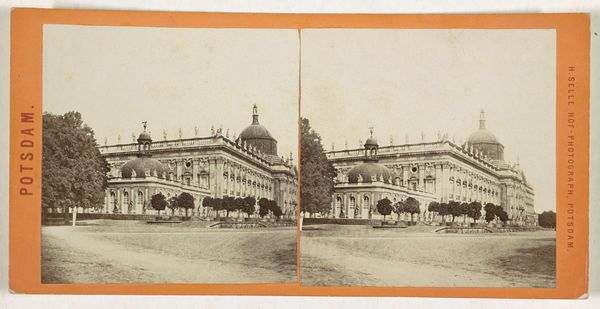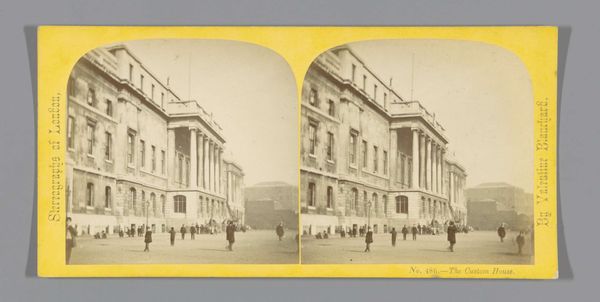
Gezicht op de Hollandse Kerk aan de Nevski Prospekt in Sint-Petersburg c. 1850 - 1880
0:00
0:00
print, photography, gelatin-silver-print
# print
#
photography
#
gelatin-silver-print
#
cityscape
#
realism
Dimensions: height 85 mm, width 170 mm
Copyright: Rijks Museum: Open Domain
Editor: So, this gelatin silver print, "Gezicht op de Hollandse Kerk aan de Nevski Prospekt in Sint-Petersburg" by Albert Felisch, likely created sometime between 1850 and 1880, offers a detailed cityscape. It feels almost dreamlike in its clarity, but there's a starkness to it. What catches your eye in this particular depiction? Curator: The most striking element is the interplay of Western and Eastern architectural symbols. Notice the Dutch church, its dome subtly echoing Eastern Orthodox traditions, sitting along Nevsky Prospekt. It's not merely a street; it's a stage upon which these cultural narratives converge. Does it invite reflection on Russia's complex relationship with Europe? Editor: That's interesting. I hadn't considered the dome as an echo of Eastern Orthodox traditions. It does prompt that kind of consideration. What does that cultural convergence tell us about St. Petersburg at that time? Curator: It speaks to St. Petersburg's designed identity as a window to the West. But it also suggests a continuous negotiation. Even as Peter the Great imported European styles and ideas, they were absorbed into the Russian experience, changing to become something new. Do you see how even the light seems to create a particular kind of nostalgia? Editor: Now that you point it out, I do. Almost like a romantic lens looking back on a period of intense cultural exchange. Is it a realistic portrayal or a romanticized one, would you say? Curator: That's a subtle point, isn’t it? Photography offers what appears to be an objective record. Yet, the choice of subject, the angle, and even the printing process all influence our perception. This image, I think, aims to immortalize the vision of St. Petersburg as a place of both European grandeur and Russian identity. The presence of Dutch symbols speaks to Russia’s history. What is remembered through the image? Editor: That makes me consider how carefully constructed "realism" really is. I guess the symbolic weight of the church within this vista tells a more nuanced story. Curator: Exactly! It prompts reflection, not just observation. Cultural memory shapes reality, and visual symbols become the story. I find that incredibly interesting. Editor: Me too! I didn't think I'd get so much out of what seemed like just a city street!
Comments
No comments
Be the first to comment and join the conversation on the ultimate creative platform.
